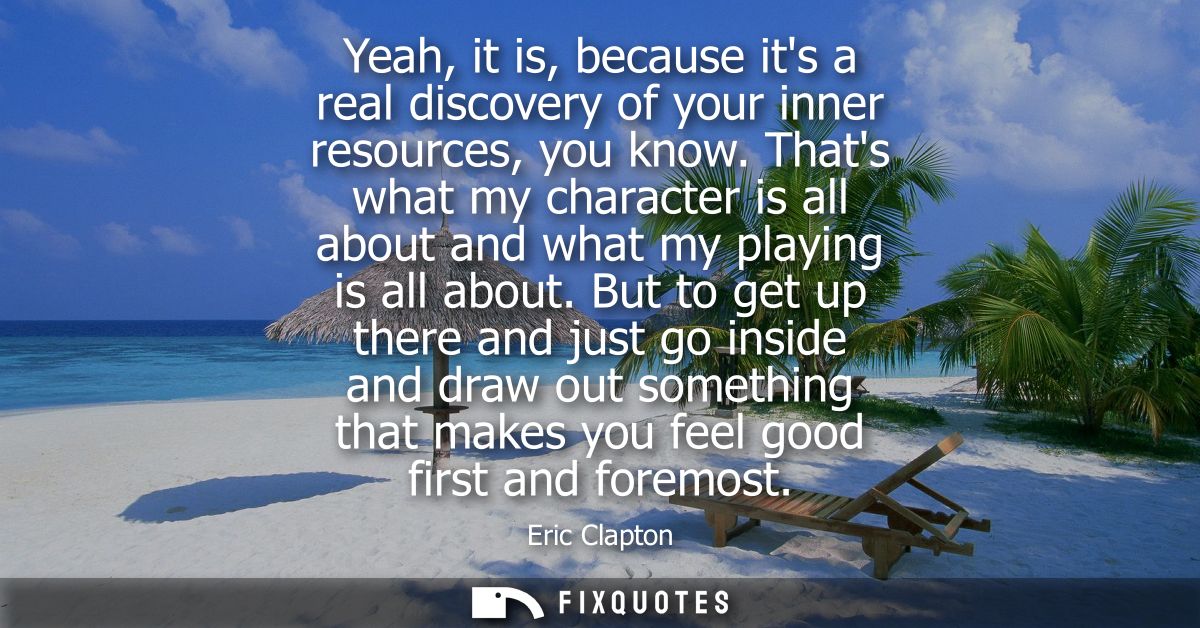"Yeah, it is, because it's a real discovery of your inner resources, you know. That's what my character is all about and what my playing is all about. But to get up there and just go inside and draw out something that makes you feel good first and foremost"
About this Quote
Eric Clapton’s statement reveals a philosophy of creativity rooted in authenticity and personal exploration. He acknowledges the journey of music as a process of uncovering “inner resources,” suggesting that the most moving artistic expressions come from a place deep within. It’s not merely about technical skill or performing for others; it’s an intimate searching for something genuine inside oneself. Clapton ties this sentiment directly to the characters he plays and the way he approaches his music, underlying an unshakable link between personal experience and artistic output.
He emphasizes the act of “going inside and drawing out something,” which is a profound way to describe the creative process. Rather than constructing music externally or adhering strictly to learned patterns, he ventures inward, seeking emotions, memories, and inspirations that are inherently his. This process is fundamentally therapeutic and fulfilling; the primary goal is to make himself “feel good first and foremost.” There’s an honest prioritization of self-fulfillment, which upends the idea that art is solely for public consumption. Music, for Clapton, begins as a dialogue with oneself, a way to access feelings or truths that might otherwise remain hidden.
By framing musical performance as a “discovery,” he highlights its unpredictable, adventurous nature. Each time he plays or embodies a character, there’s potential for new revelations about himself and his abilities. This openness to discovery keeps his artistry dynamic and alive. Clapton’s words suggest that meaningful creativity is less about external validation and more about personal resonance. The act of creating, whether playing guitar, writing, or performing, becomes an exploration of one’s deepest capacities. Artistic authenticity, then, emerges not as an automatic result of skill but as the outcome of courageously accessing and sharing one’s internal world. Ultimately, his approach invites others to create first for themselves, trusting that true connection with an audience arises from the honesty of that process.
More details
About the Author

